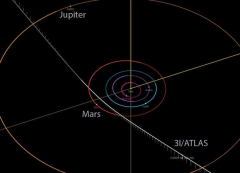Juno would offer ~20-24x better angular resolution due to proximity (distance ratio ~24:1), enabling finer details of extended features like jets or tail asymmetry, if the coma is active. Juno excels in intensity and resolution for extended structures, offering complementary data if diverted. Juno’s closer vantage enables brighter, potentially resolved views of active features—valuable for a rare, fast-moving target.
This as a low-risk repurposing of Juno, which is nearing mission end (extended operations conclude ~September 2025). With Juno’s mission winding down, this is a worthwhile high-reward gamble.
The diversion would likely allow Juno to collect unique, closer-range data not possible from JWST or other Earth-based facilities. We could potentially answering key questions about the composition and origin of such ancient, rare interstellar objects. Given the rarity of such visitors and the potential insights into the broader galactic environment, there is strong scientific justification for making an extra effort.
James Webb telescope
The 3I/Atlas object is about 3-4 AU (450-600 million km) from Earth, yielding an angular size for the 15 km nucleus of ~0.005-0.01 milliarcseconds (mas)—far below JWST’s diffraction limit (60 mas at 2 μm). Any coma (gas/dust envelope, potentially 100,000-500,000 km across if active) would span ~10-50 arcseconds, resolvable by JWST’s NIRCam (pixel scale ~0.03 arcsec/pixel).
At 25 million km, the nucleus angular size is 0.12 mas—still unresolved for Juno. A coma could span ~0.2-1 degree, potentially filling multiple pixels in JunoCam (resolution ~0.06 deg/pixel) or JIR





